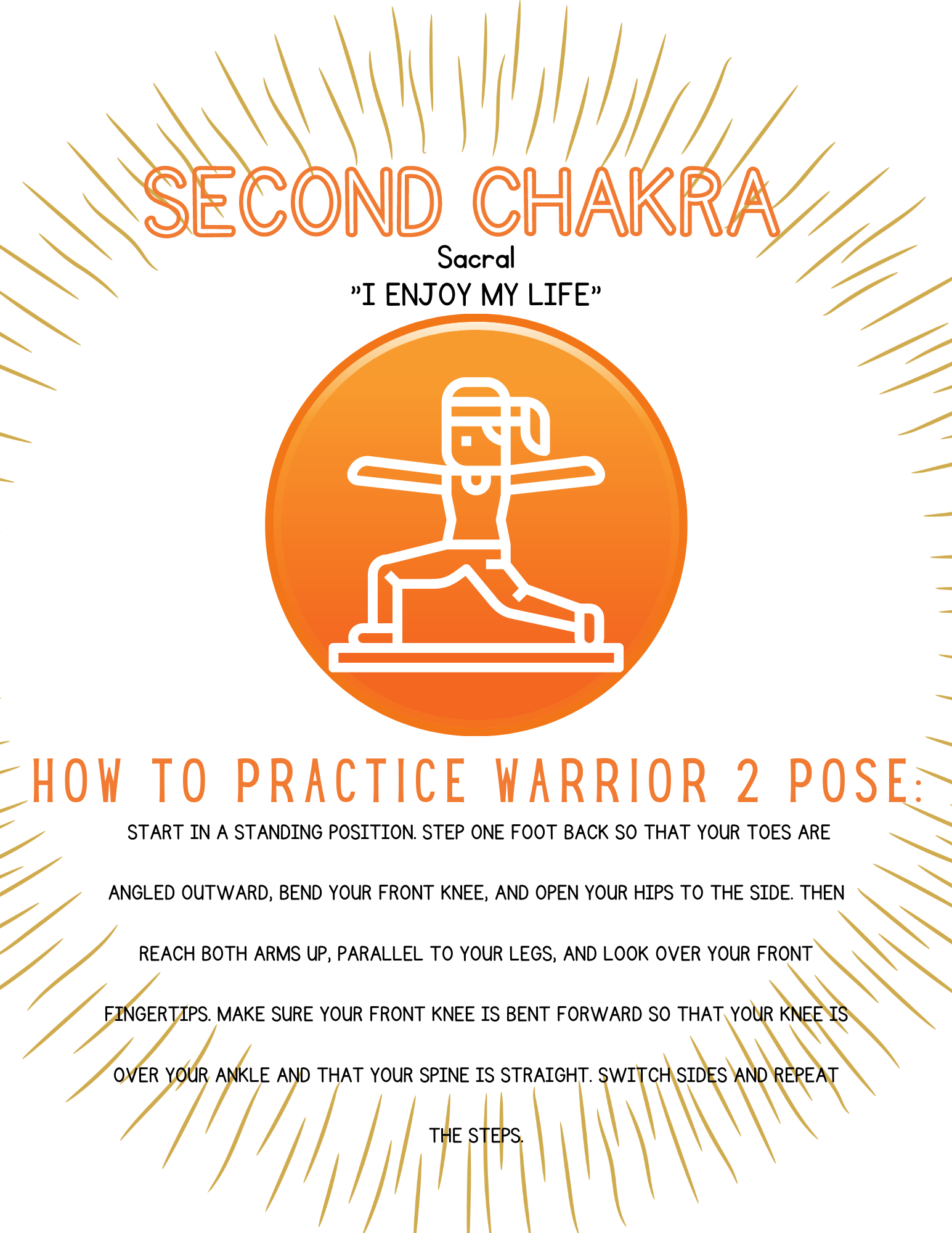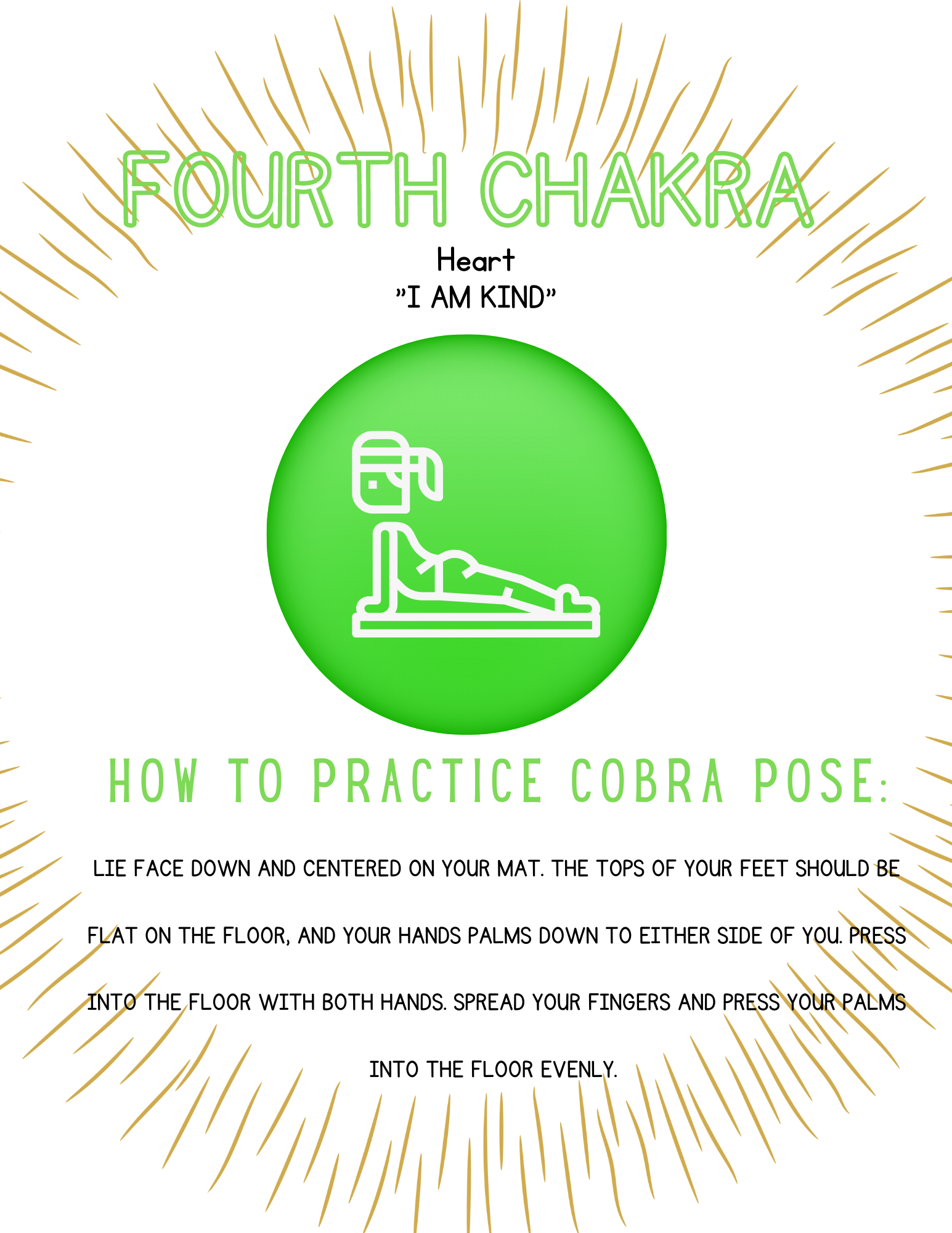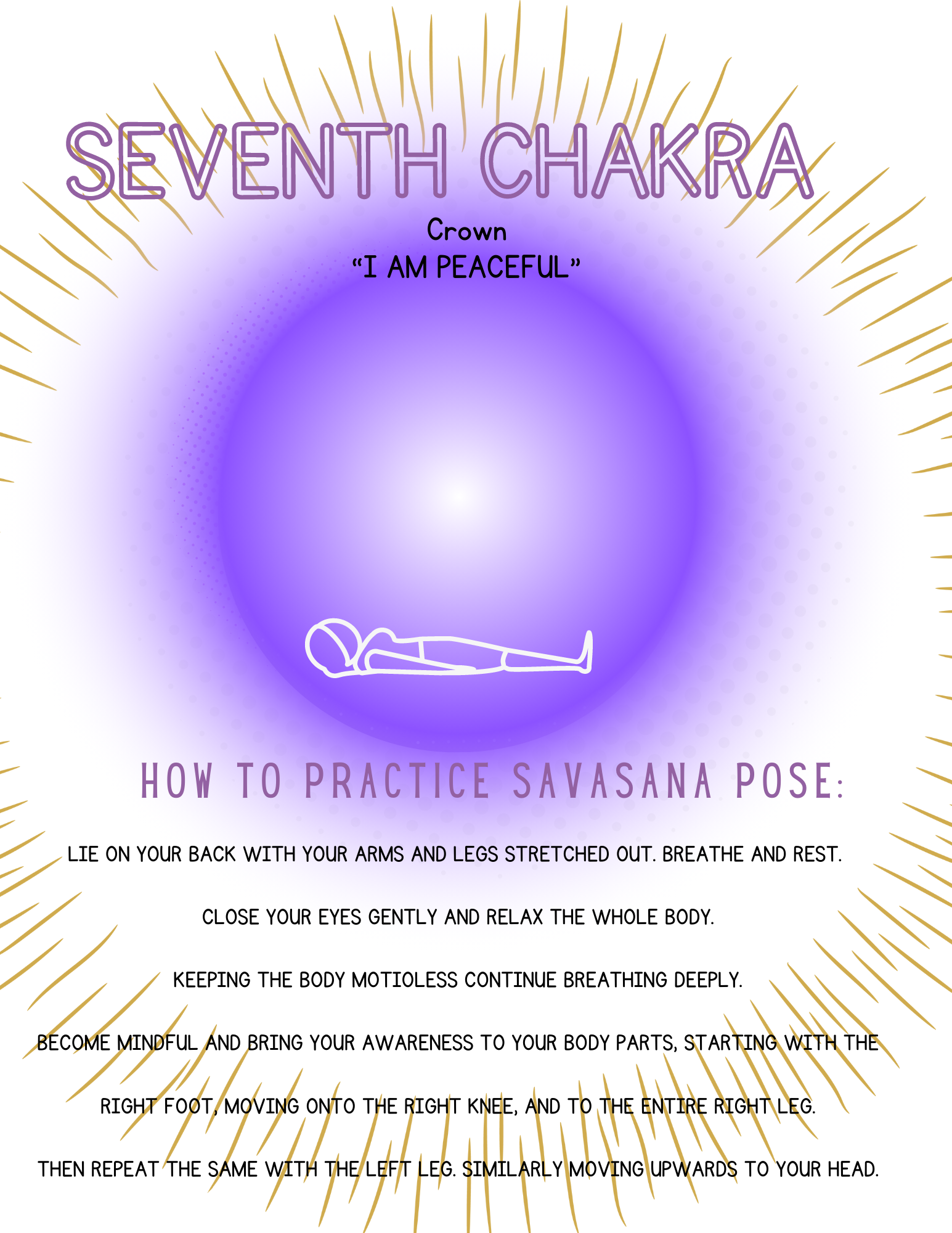Here we are friends! Mid August, the weather has been great and the kids have been really enjoying it all! I don’t know about you, but I am BEYOND excited about the kids getting on that school bus everyday to that magical place where they get to learn and socialize and well, not be at home all day!!!
With lots of changes coming up for our kiddos, I though this would be a great time to go over the Chakras and how kids can learn to use the idea of Chakras, affirmations and yoga poses to feel more balanced when things might feel overwhelming.
So first off, WHAT EXACTLY IS A CHAKRA?
The concept of Chakras is rooted in ancient traditions of Hinduism but is also found in Buddhism and has made its way into spiritual traditions such as yoga.
According to the concept, the physical human body does not only consist of bones, muscles, organs, and skin. It’s rather made up of various layers of energy fields surrounding the physical body. These layers are said to form the “subtle body”, also known as the “energy body” which holds all the energy that affects your mind, body, and spirit
The word Chakra is an old Sanskrit word and can be translated as ‘spinning wheel’. According to yogic beliefs, the human body has seven Chakras, which can be thought of as intersections of different energy channels. The life force, called Prana, travels through these channels or Nadis. Though the chakras are developing throughout your life, children and teens are not too young to begin to understand the basics concepts of chakras.
Each Chakra is responsible for different behaviors and values in life, such as security, communication, compassion, and love.
The yoga poses below, along with positive affirmations, correlate with each of the seven chakras.
The chakra yoga poses below can help children tune in to their unique thoughts, emotions and wellness. Chakra yoga poses including heart opening poses, back bends, and inversions—ultimately assist in energy flow throughout their bodies. Creating this deeper understanding of their wholistic selves can be part of building a healthy and well balanced life.
In this blog I will go over each of the seven Chakras, where they are located in subtle body, what color they are associated with and poses to tune into each Chakra. While practicing each posture encourage your child to repeat the affirmation, feeling the truth of the statement each time.
FIRST CHAKRA (ROOT)
“I AM SECURE”
tree pose
Just like a tree, your Root Chakra is what grounds you to the Earth, creating the foundation on which you build your life. The Root Chakra is associated with our feelings of safety and security, both physical and metaphorical. This includes your basic needs such as food, water, and shelter, as well as your emotional needs. Your Root Chakra is what causes your survival instincts, also known as the fight or flight responses.
The first chakra sits at the base of the spine and is associated with the element of earth and the color red. Referred to as the root chakra, it is connected to courage and self-care as well as stability. The mantra that corresponds with this chakra is Lam (meaning seed) and and its vibration is believed to activate this energy center. A balanced Root Chakra creates the solid foundation that is necessary for connecting with and opening the six other chakra energy centers.
SECOND CHAKRA (Sacral)
“I ENJOY MY LIFE”
warrior 2
The second chakra is called Svadhisthana or the sacral chakra. It is located in the area of the pelvis. It is known as the creativity chakra. Its color is orange and its element is water. Creativity and pleasure stem from this energy center. The mantra that corresponds with this chakra is Vam.
THIRD CHAKRA (Naval)
“I AM CONFIDENT”
BOAT POSE
The third chakra is called Manipura, which means “lustrous gem.” Manipura is the original Sanskrit name for the Solar Plexus chakra. Located around the navel in the area of the solar plexus and up to the breastbone, it is a source of personal power and governs self-esteem, warrior energy, and the power of transformation. The Manipura chakra also controls metabolism and digestion.
When you feel self-confident, have a strong sense of purpose, and are self-motivated, your third chakra is open and healthy. If you're experiencing chakra imbalance, you can suffer from low self-esteem, have difficulty making decisions, and may have anger or control issues. This means that your solar chakra is blocked and therefore cannot achieve its full potential.
In order to understand the chakra, there are some key details that we must understand first. These include:
Element: Fire is the main element of the solar plexus, or Manipura chakra. The element is meant to ignite your inner fire and strengthen your digestive fire.
Color: The color of the Manipura chakra is bright yellow, like the sun.
Location: The solar plexus is located around your navel area of the body near your upper abdomen and breastbone. Due to its location, it is also connected with the digestive system. The solar plexus is the third of seven major chakras in the body. This area of your navel must be open in order to feel the self-confidence and sense of purpose that you wish to achieve.
FOURTH CHAKRA (heart)
“I AM KIND”
cobra pose
Perhaps the most familiar chakra is the heart chakra, Ahahata. Its color is green and its element is air. It is deeply associated with love, compassion, forgiveness, and peace. The mantra that corresponds with this chakra is Yam.
In Balance: When energy flows freely, you will experience compassion, love, and acceptance.
Too Much: If you are experiencing jealousy or feeling clingy, you may have too much heart energy.
Not Enough: Signs that your heart chakra may be blocked or low in energy include feeling shy or lonely, or experiencing an inability to forgive.
Fifth Chakra (throat)
“I am confident”
Bridge Pose
The Vishuddha or throat chakra is your center of expression, associated with speaking your truth. Its element is akasha, which is a Sanskrit word that means space or pure potentiality. The color associated with Vishuddha is blue. The mantra that corresponds with this chakra is Ham.
In Balance: When the throat chakra is in balance, you feel authentic and are a confident conversationalist and good listener.
Too Much: If you know the expression “all choked up” then you understand what too much throat chakra energy might feel like—an emotional overload. It is also associated with manipulative behavior, arrogance, and being too talkative.
Not Enough: When the throat energy is low, there can be a tendency to feel shy or reticent or to act in a passive-aggressive way.
SIXTH CHAKRA (forehead)
“I AM OPEN-MINDED”
legs up the wall
The sixth chakra is found at the center of your forehead, the third eye. This is the Ajna chakra. Your decisions, intuition, and choice-making are connected with this chakra, whose associated color is purple. The mantra that corresponds with this chakra is Sham.
In Balance: Ajna means “beyond wisdom,” and in balance you experience expanded imagination, clairvoyance, synchronicity, and intuition.
Too Much: When the third eye chakra is overactive, the mind races. You can feel that buzzy energy of over-caffeination or sleeplessness. It can be difficult to concentrate or stay on task.
Not Enough: Low or blocked Ajna energy impedes your ability to remember and concentrate. Processing speed slows and you may be prone to procrastination and indecision.
SEVENTH CHAKRA (crown)
“I AM PEACEFUL”
Savasana
The seventh chakra is called Sahaswara or the crown chakra. It is your connection to your source, spirit, or the collective consciousness. Its color is white or ultra-violet. The mantra that corresponds with this chakra is Om.
In Balance: In balance, this chakra maintains your self-awareness, wisdom, and connection to the inner compass that guides you to your highest self.
Too Much: Signs of too much crown energy include materialism and rigid self-identity.
Not Enough: Low crown energy leads to depression, a sense of disconnection from life, and a lack of compassion.







